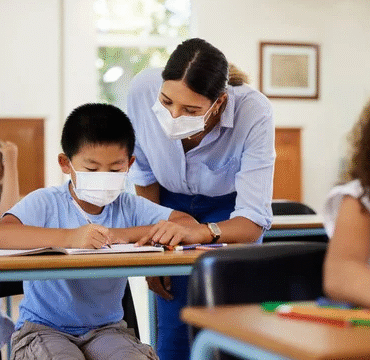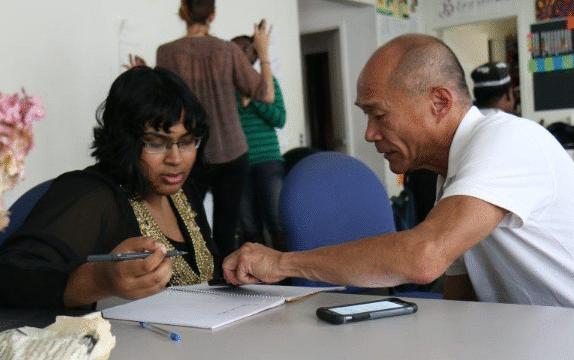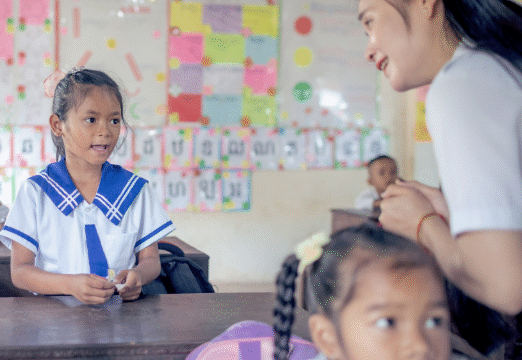Access to education is often described as a doorway to
opportunity, yet for many children around the world,
that doorway is still difficult to reach. Communities
play an important role in breaking down the barriers that prevent students from getting to school and staying there. From building safer pathways to organizing support networks, local efforts can make a lasting difference in ensuring that education truly becomes available to all. Improving access to schools is not only about the physical journey but also about creating an environment where children feel supported, safe, and encouraged to learn.
One of the most direct ways communities can help is by making the journey to school safer and easier. In some areas, children walk long distances across busy roads, rivers, or unsafe terrain just to reach the classroom. Community members can come together to advocate for infrastructure improvements such as pedestrian crossings, footbridges, and even bicycle paths. In rural areas where roads are poor, neighbors might organize carpools or establish a rotating schedule of adults who accompany children on their walk to school. These practical measures provide peace of mind for families and allow students to arrive ready to learn rather than exhausted from a difficult journey.
Transportation solutions can also make a major difference. In regions where schools are far apart, communities have worked together to set up affordable bus services or to lobby local authorities for school transport programs. Some creative initiatives even involve boat rides or motorcycle shuttles in places where traditional buses cannot travel. These local solutions highlight the power of teamwork and demonstrate how collective action can overcome geographic barriers.
Access to schools is not only about roads and transportation. Sometimes the challenge lies in affordability. Even when public education is officially free, hidden costs such as uniforms, supplies, or lunch can create obstacles for families. Communities can ease this burden by organizing donation drives, secondhand uniform exchanges, or supply-sharing programs. Schools themselves can partner with local businesses and organizations to provide scholarships or resources for students in need. Such efforts remind families that they are not alone and that education is a shared community goal.
In addition to financial support, community involvement can also create a sense of belonging that motivates children to attend school. Volunteers might run after-school programs, reading clubs, or tutoring sessions to help students who need extra attention. When children see that their neighbors, relatives, and friends value education, they are more likely to stay engaged and committed. In some villages and towns, parents form committees that work alongside teachers to monitor attendance, celebrate student achievements, and address challenges quickly. These partnerships strengthen the connection between home and school, making education a collective responsibility.
Improving access also requires attention to inclusivity. Some children face barriers not because of distance or cost but because of disability, language, or cultural expectations. Communities can encourage schools to be more welcoming by supporting teacher training, ensuring classrooms are accessible, and promoting awareness campaigns about the importance of education for all children, including girls and those with disabilities. By embracing diversity and encouraging equal participation, communities create learning environments where every child feels seen and valued.
Nutrition and health are additional factors that influence school attendance. If children are hungry or unwell, even the shortest journey to school can feel overwhelming. Community-led school meal programs have proven to be powerful motivators for attendance while also improving students’ ability to concentrate and learn. Health initiatives, such as regular checkups or partnerships with local clinics, help ensure that children remain healthy enough to attend classes consistently. These programs not only support learning but also demonstrate the caring role that communities can play in the well-being of their youngest members.
Technology, when used wisely, can also help communities improve access. In areas where attending school daily is difficult, local centers equipped with computers or tablets allow children to connect with teachers and continue their studies. Communities can set up shared learning hubs where students gather, ensuring that distance does not limit opportunity. This approach is particularly effective in remote regions or during times when traditional schooling is interrupted, reminding us that access to education can take many forms.
Awareness campaigns are another community tool that should not be underestimated. Sometimes families may not see the immediate value of education, especially when children are expected to contribute to household work or family income. Community leaders, religious groups, and local organizations can play a role in spreading messages about the long-term benefits of education. Celebrating success stories of local students who went on to find meaningful work or contribute positively to society can inspire families to prioritize school attendance for their children.
Partnerships with local government are equally important. While communities can achieve a great deal through volunteerism and local action, collaboration with public institutions often unlocks greater resources. Advocacy for new schools, better teacher placement, and infrastructure investment requires both local voices and official support. When communities organize and present their needs clearly, they are more likely to attract government attention and secure sustainable improvements.
Ultimately, improving access to schools is about more than logistics. It is about fostering a culture where education is seen as a shared treasure, something worth protecting and nurturing together. Communities that invest time, effort, and creativity into supporting their schools often see benefits that extend far beyond the classroom. Children grow up with stronger foundations, families feel supported, and the community as a whole gains resilience and hope for the future.
The journey toward better access to schools is ongoing, and no single solution fits every community. What matters most is the willingness to come together, identify the barriers that exist, and take small but meaningful steps toward change. Whether it is repairing a path, organizing a carpool, setting up a supply drive, or advocating for new resources, every action taken by the community brings education closer to those who need it most.
When children can walk safely to school, when families feel supported in meeting educational costs, and when schools open their doors to every child without discrimination, the dream of universal education becomes more real. Communities hold the power to make that dream possible. By working hand in hand with teachers, families, and local leaders, they can turn schools into places of opportunity that no child is excluded from.
Access to education should never be a privilege reserved for the few. With care, cooperation, and commitment, communities can transform it into a right fully enjoyed by all children. In doing so, they not only improve access to schools but also strengthen the very foundation of a brighter, more inclusive future.






